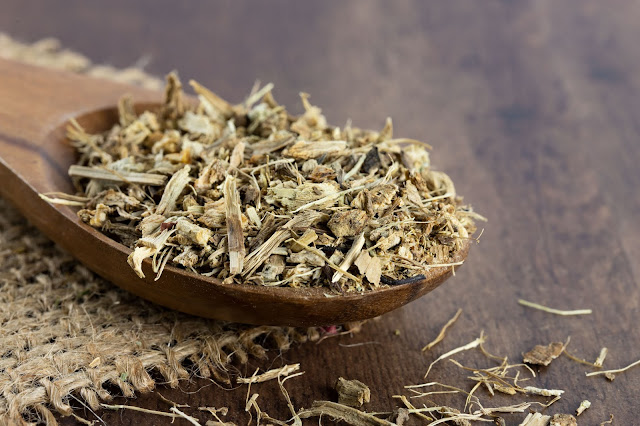"Also known as "false" Indian Valerian Root Oil. It should not be confused with the essential oil of various Ferula Species, an oil which is known under the name of Sumbul Root Oil.
Spikenard Oil is derived from the roots of Nardostachys Jatamansi, a plant of the valerian-aceae. The plant plant grows wild in India (northern mountain regions), China and Japan (also Formosa).

The dried, comminuted root (rhizome and root) is steam distilled in India or Europe or the U.S.A. Unfortunately, there are a number of Nardostachys species and also other plants, not only to the valerian family but also to quite different families which yield roots, sold commercially as "Indian Valerian Root" Consequently, there are different opinions on the odor and flavour of Spikenard Oil. As a general description it can be said that the oil is a pale yellow to amber coloured liquid with a heavy, sweet-woody and spicy-animal odor, reminiscent of valerian, ginger, cardamom, and Atlas cedarwood oils. The flavor is warm-spicy, root-like in sweetness, somewhat pine-wood-like and slightly bitter-burning, powerful.
Spikenard Oil is not regularly produced outside of India and Japan, but when the oil is available, it can be used with advantage in perfumes such as Oriental bases, heavy florals, fougéres, woody bases, animal-ambre types, etc. It blends well with amyl salicylate, cedarwood oil, and its derivatives coumarin, ionones, labdanum products, lavender, oakmoss products, patchouli oil, pine needle oil, vetiver oil etc. In flavors, it can be used as a modifier for valerian, hop, ginger, calamus, cardamom, etc. and it's warm and rich body will help rounding off the sharp notes from chemical additives in the flavor composition.
The oil has been used as a substitute for Valerian Oil, but the reverse case has also occurred since Spikenard Oil is now a scarce oil. Adulteration takes place frequently with additives such as borneol, patchouli oil, isobornyl valerianate, terpinyl valerianate, eugenol, cajeput oil etc." Steffen Arctander, Perfume and Flavor Materials of Natural Origin. Monograph 591
According to the Ayurvedic system of India, Spikenard Roots were dried in the sun and then soaked with ghee before being smoked like a cigarette to relieve asthma (Mishra 2003). In the Sikkim Himalayas of India, the roots were burned as incense to drive away evil spirits (Pandey 1991). In the Manang District of Nepal, Spikenard was highly esteemed as incense because it did not grow near human habitations and therefore was not contaminated in any way (Pohle 1990).
Spikenard has also been mentioned in the Bible that Mary uses a pound of pure Jatamansi to anoint Jesus's feet. "Then Mary took about a pint of pure nard, an expensive perfume; she poured it on Jesus' feet and wiped his feet with her hair. And the house was filled with the fragrance of the perfume."





.jpeg)